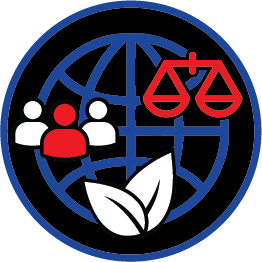
ESG Exposure
Stop the Surprise. Stop the Loss: Quantify External Reputational Risk with the ThreatNG ESG Exposure External Rating (A-F)
Your Enterprise Risk Management (ERM) team manages internal compliance with rigor, but a critical vulnerability persists: the External GRC Blind Spot. Today, Reputational Risk is defined by its unpredictable nature—a minor public disclosure or compliance failure (across the Competition, Financial, or Environment categories) that can instantly trigger a catastrophic loss of capital and executive credibility. The ThreatNG ESG Exposure External Rating (A-F) eliminates that uncertainty. We provide Continuous Governance Monitoring through an objective, outside-in metric that aligns with regulators' and investors' views, giving you the quantification and control needed to defend your organization's integrity.
ThreatNG's ESG Exposure Security Rating: Reflecting Violation-Based Risk Assessment
ThreatNG's ESG Exposure Security Rating directly quantifies an organization's risk based on the detected presence and severity of violations across key ESG categories, as cataloged within our ESG Intelligence Repository (DarCache ESG). This rating system synthesizes data on found infractions, ranging from anticompetitive practices and labor violations to environmental impact and governance breaches, to provide a clear, actionable score. By highlighting the specific violations contributing to an organization's risk profile, ThreatNG enables targeted mitigation strategies, strengthens compliance efforts, and protects against the potential reputational and financial consequences of non-compliance.
Actions that unfairly limit market competition, such as price-fixing, monopolies, and bid-rigging, constitute these violations. Innovation is stifled, consumers are harmed through inflated prices, and market efficiency is distorted. Legal penalties can be imposed on organizations involved in such practices, undermining fair trade principles.
Actions that harm the natural environment, such as pollution, illegal waste disposal, and habitat destruction, constitute such violations. Climate change damages ecosystems, and substantial fines and regulatory action can result. Organizations are increasingly held accountable for their environmental footprint.
Healthcare Compliance Violations
This area encompasses breaches of healthcare regulations, including fraud, patient privacy violations, and improper handling of controlled substances. When these occur, patient safety is compromised, the integrity of healthcare systems is undermined, and severe penalties can result. Strict adherence to healthcare compliance is essential.
Consumer Protection Violations
Deceptive, unfair, or unsafe practices that harm consumers define this category. False advertising, product safety failures, and discriminatory sales tactics are examples. Consumer trust is eroded, and businesses face legal repercussions and reputational damage.
Illegal or unethical financial activities include fraud, money laundering, and insider trading. They can undermine financial stability, erode investor trust, and result in severe legal penalties. Robust financial governance is essential to prevent such offenses.
Safety and Security Violations
Failure to protect individuals and assets from harm, including workplace accidents, product safety defects, and data breaches, represent these violations. Lives are endangered, reputations are damaged, and substantial legal liabilities can result. Organizations must prioritize safety and security to mitigate these risks.
Labor and Employment Violations
This heading covers various offenses related to workers’ rights and fair employment practices. These include discrimination, wage violations, unsafe working conditions, and breaches of labor laws. These offenses damage employee morale, create legal liabilities, and harm a company's social standing.
Government Contracting Irregularities
This heading covers various offenses related to workers’ rights and fair employment practices. These include discrimination, wage violations, unsafe working conditions, and breaches of labor laws. These offenses damage employee morale, create legal liabilities, and harm a company's social standing.
General Governance and Ethical Breaches
This category includes various unethical or illegal actions that undermine good corporate governance. Bribery, conflicts of interest, and lack of transparency are examples. These actions can erode stakeholder trust, damage a company’s reputation, and result in legal and financial consequences. Strong ethical leadership and robust governance structures are crucial for prevention.

Gain the External Adversary View: Eliminate the GRC Blind Spot
You cannot manage a risk you cannot see. While your internal audit focuses on policies and checklists, the ThreatNG ESG Exposure External Rating is derived from an external, unauthenticated process, giving you the necessary External Adversary View. We partner with you, ensuring you see the publicly disclosed data—from lawsuits to regulatory fines—exactly as an activist investor or a regulator would. By continuously monitoring granular data in the DarCache ESG Intelligence Repository, you gain objective visibility into emerging threats and proactively close the gap between internal adherence and external accountability.
Protect Capital and Credibility: Manage by Loss Aversion
For the Chief Risk Officer, success is tied to preventing unpredictable financial and reputational losses. What will a drop to an 'F' cost in shareholder value? The A-F rating provides a quantifiable early warning system, allowing you to prioritize risks that directly affect market trust. This simple grade objective enables the justification of the resources required for proactive governance initiatives and secures your reputation as a risk leader with the board. Do not wait for the market to assign your grade; use the ESG Exposure External Rating to mitigate catastrophic exposure before the loss occurs.

Translate Chaos to Control: Board-Ready A-F Quantification
The challenge of Non-Financial Risk Monitoring is complexity. Our rating simplifies external governance risk into a universally understood A (Best) to F (Worst) performance index. We synthesize continuous public data across critical governance categories—including Employment, Healthcare, and Safety violations —into a single, high-level metric. This makes the invisible visible and the complex simple, empowering you to confidently communicate enterprise risk posture to the board and ensure your GRC function meets the mandate for continuous learning and review.
ThreatNG ESG Exposure Score: Severity Levels Explained
The ThreatNG ESG Exposure Score utilizes a letter grading system (A-F) to communicate the severity of your organization's vulnerability to negative consequences stemming from Environmental, Social, and Governance (ESG) factors. This grading system aligns with the ThreatNG Digital Presence Triad, providing a clear picture of the risk based on three key factors:
Feasibility
This assesses the ease with which stakeholders or activist groups could exploit ESG issues to damage your reputation or financial standing. Grade A indicates a strong ESG track record with minimal potential for negative publicity due to environmental issues, social controversies, or governance concerns. Conversely, Grade F signifies a history of significant ESG violations (e.g., environmental pollution, labor rights abuses, financial misconduct) that stakeholders could easily exploit.
Believability
Evaluates the likelihood of negative information or events related to ESG being perceived as credible and damaging by your target audiences. A low score (A) suggests a low chance of negative information being widely believed, often due to factors like a transparent ESG commitment, proactive efforts to address past controversies, and strong relationships with stakeholders. A high score (F) indicates a high likelihood of negative information being readily believed due to a lack of transparency, a history of unaddressed ESG concerns, or weak stakeholder engagement.
Impact
Considers the potential consequences of successfully exploiting ESG vulnerabilities. Grade A signifies minimal potential damage, such as a minor negative news story with limited financial or reputational impact. Grade F indicates a scenario with severe consequences, such as a significant regulatory fine for environmental violations, a consumer boycott triggered by social controversies, or a loss of investor confidence due to governance concerns.
How the Grades Translate to Severity
A (Low Severity)
Your organization has a strong ESG track record, limited potential for negative publicity, and a low chance of negative information being believed or causing significant damage.
B (Moderate Severity)
While your organization might have some past ESG issues or areas for improvement, stakeholder concerns are still considered moderate, and the potential impact of negative information is manageable.
C (Medium Severity)
This indicates a balance between the ease of exploiting ESG issues (Feasibility), the likelihood of negative information being believed (Believability), and the potential consequences (Impact). To minimize possible damage, it is recommended that you remediate these moderate risks by strengthening your ESG practices.
D (High Severity)
Your organization shows vulnerabilities in its ESG practices that stakeholders could readily exploit. There is a moderate likelihood of negative information being believed and causing significant consequences. Urgent action is needed to address outstanding ESG concerns and demonstrate a commitment to improvement.
F (Critical Severity)
This signifies the highest risk scenario. Your organization has a history of severe ESG violations, faces a high likelihood of negative information being readily believed, and could suffer severe consequences like regulatory fines, consumer boycotts, or loss of investor confidence. Immediate action is crucial to rectify past ESG issues, implement robust ESG practices, and regain stakeholder trust.
The ThreatNG Advantage
Considering all three factors (Feasibility, Believability, and Impact), the ThreatNG score goes beyond a simple ESG compliance assessment. It prioritizes ESG risks based on real-world scenarios, allowing you to focus resources on the areas with the most tremendous potential for reputational or financial damage. This focus on the Digital Presence Triad helps organizations achieve optimal ESG outcomes by first addressing the most critical issues.

Navigate the ESG Landscape with Confidence: Actionable Insights from ThreatNG
In today's world, Environmental, Social, and Governance (ESG) factors are no longer just a compliance concern; they're a critical business risk. The ThreatNG ESG Exposure Score transcends traditional methods by offering a wealth of actionable insights fueled by a powerful combination of data and intelligence. This empowers organizations to manage ESG risks and safeguard their reputation proactively. Here's how ThreatNG delivers superior value:
Actionable Insights and Data-Driven Objectivity
ThreatNG goes beyond simply identifying potential ESG vulnerabilities. The score analyzes your organization, third-party vendors, and the entire supply chain by leveraging External Attack Surface Management (EASM), Digital Risk Protection (DRP), and vast ESG-focused intelligence repositories. This comprehensive view paints an objective picture of your ESG risk exposure. With this data-driven approach, you gain actionable insights that pinpoint specific areas of concern, like negative news sentiment surrounding environmental practices or potential regulatory violations within your supply chain. This allows you to prioritize remediation efforts and make informed decisions to strengthen your ESG posture.
Continuous Monitoring and Improvement
ThreatNG isn't a one-time assessment. Its continuous monitoring capabilities provide ongoing insights into your ESG risk exposure. This allows you to track progress on addressing identified issues, identify emerging ESG controversies as they surface, and measure the effectiveness of your ESG initiatives over time. This empowers a proactive approach, enabling you to adapt and improve your practices to demonstrate a commitment to responsible business conduct continuously.
Comparison and Benchmarking
The ThreatNG score allows for comparison and benchmarking against industry standards or your historical data. This comparative analysis helps you understand how your ESG risk profile stacks up against competitors and measures the effectiveness of your ESG efforts over time.
Actionable Recommendations
The score doesn't just highlight problems; it provides clear, actionable recommendations for addressing ESG vulnerabilities. These recommendations are tailored to the specific details of your ESG practices, supply chain considerations, and areas of negative sentiment. This empowers you to prioritize resources and focus your efforts on the areas that will significantly reduce your overall ESG risk exposure.
Transparency Through External Validation
ThreatNG's scoring system is clear and transparent. Because it is substantiated by the results of EASM, DRP, and extensive intelligence repositories, including Sentiment and Financials investigations and the ESG Violations Intelligence Repository, the score provides a verifiable and objective assessment of your ESG risk exposure. This transparency fosters trust with stakeholders and empowers them to assess your commitment to ESG principles confidently.

Unveiling Your Organization's Weaknesses: A Holistic View with ThreatNG Security Ratings
The ThreatNG ESG Exposure Score is a powerful tool, but it's just one piece of the puzzle within ThreatNG's comprehensive digital risk assessment suite. This suite goes beyond ESG factors to offer a broader spectrum of Susceptibility and Exposure ratings that paint a holistic picture of your organization's digital security posture, third-party vendors, and entire supply chain.
Here's why a comprehensive approach matters:
Interconnected Risks
ESG issues can exacerbate other security vulnerabilities. For instance, a data breach caused by lax environmental practices could damage your brand reputation (Brand Damage Susceptibility). ThreatNG's suite helps identify and address these interconnected risks.
Strategic Decision-Making
Assessing various vulnerabilities across different categories allows you to gain a more comprehensive understanding of your risk landscape. This allows you to prioritize resources and strategically decide where to invest for maximum impact.
Supply Chain Security
Today's businesses rely on complex ecosystems. ThreatNG's assessments extend beyond your organization, providing visibility into your vendors' and partners' ESG practices and security posture (Supply Chain and Third-Party Exposure). This empowers you to mitigate risks across your entire digital supply chain.
ThreatNG's Spectrum of Security Ratings:
BEC & Phishing Susceptibility
Assesses the risk of falling victim to Business Email Compromise and phishing attacks.
Brand Damage Susceptibility
Evaluate the likelihood of negative brand impacts due to security incidents, financial violations, or social responsibility concerns.
Breach & Ransomware Susceptibility
Assesses the likelihood of falling victim to ransomware attacks, considering exposed ports, known vulnerabilities, and dark web presence
Mobile App Exposure
The score highlights mobile app vulnerabilities, such as exposed credentials and authentication issues, reflecting an organization's security practices and impacting its ESG Exposure rating.
Cyber Risk Exposure
This section provides a broad view of external attack surface vulnerabilities, encompassing the technology stack, cloud environments, and code exposure.
Data Leak Susceptibility
Measures the potential for data breaches based on cloud configurations, SaaS usage, and code repository security.
Non-Human Identity (NHI) Exposure
Quantifies an organization's vulnerability to threats from leaked API keys, service accounts, and system credentials, which are often invisible to internal security tools.
Subdomain Takeover Susceptibility
Identifies weaknesses in subdomain configurations that could allow attackers to take control.
Supply Chain & Third Party Exposure
Analyzes the security posture of your vendors and partners, highlighting potential vulnerabilities within your supply chain.
Web Application Hijacking Susceptibility
Analyzes web applications for vulnerabilities attackers could exploit.
Frequently Asked Questions (FAQ): ThreatNG ESG Exposure External Rating
Understanding the ThreatNG ESG Exposure External Rating
-
The ThreatNG ESG Exposure External Rating is an objective, continuously monitored letter grade (A being the best, F being the worst) that quantifies your organization's exposure to non-cyber, publicly disclosed governance violations. It operates as an external, unauthenticated assessment that mirrors the views of regulators, activists, and investors. It provides senior executives with a simple, high-level metric to understand and communicate complex reputational risk instantly.
-
The ESG Exposure Rating focuses on identifying and reporting publicly disclosed violations across eight critical governance categories that directly impact corporate integrity and reputation: Competition, Consumer, Employment, Environment, Financial, Government Contracting, Healthcare, and Safety-related offenses.
-
The objectivity of the rating is rooted in its continuous external discovery methods and intelligence repositories. The grade is calculated based on specific, verifiable public records, such as lawsuits, regulatory filings, and negative news on the eight violation categories. This granular data is held within the DarCache ESG Intelligence Repository. This ensures the score is based on observable, external facts rather than internal company reports.
The Problem: Why External ESG Visibility is Critical
-
While internal Governance, Risk, and Compliance (GRC) programs are vital for adherence to internal policies and checklists, they often create an "external blind spot". Reputational risk is defined by its unpredictable nature, frequently caused by a public event—a lawsuit, a fine, or activist campaign—that originates entirely outside your internal perimeter. Your internal systems cannot proactively flag these external disclosures.
The ThreatNG ESG Exposure Rating ensures your GRC function maintains continuous learning and review by monitoring the external environment —a necessary component of high GRC maturity. Relying solely on internal audits leaves you vulnerable to being blindsided by a publicly visible failure.
-
The biggest threat is the potential for unpredictable, catastrophic financial loss and the erosion of corporate trust. Unmonitored reputational risk can rapidly spread through digital channels, compounding existing problems and potentially leading to devastating consequences, including significant stock volatility or investor flight. The danger lies not in the violation itself, but in the surprise of that violation being weaponized by an external entity before you have time to mitigate it.
The Value Proposition: From Risk to Control
-
Senior executives are highly susceptible to loss aversion—the bias toward avoiding adverse outcomes. The A-F score provides a quantifiable early warning system. By monitoring publicly disclosed Financial, Competition, and Environmental violations, you can address potential crises proactively. This allows you to mitigate negative investor attitudes, preempt media scrutiny, and avoid the volatile stock reaction and possible loss of capital that results from an unmanaged public integrity failure.
-
The ESG Exposure Rating is explicitly designed for the Chief Risk Officer (CRO) and Chief Compliance Officer (CCO). While ThreatNG provides security ratings for the CISO, this specific rating addresses governance-related, non-technical risks that fall under the ERM and corporate integrity mandates. The A-F grade is a board-ready metric that enables the CRO/CCO to justify resource allocation and demonstrate continuous, objective management of enterprise-wide risk to the board and stakeholders.
-
No. The ThreatNG ESG Exposure Rating is derived from purely external, unauthenticated discovery. It provides an outside-in evaluation, giving you the necessary External Adversary View of your governance posture—the exact perspective a regulator, activist, or investor would have. This ensures objective, continuous monitoring without impacting internal systems.

Security Ratings Use Cases
ThreatNG is a security rating platform enabling businesses to evaluate and monitor their security posture and that of their third-party vendors. By leveraging our extensive security information database, ThreatNG provides valuable insights into potential vulnerabilities and risk exposure, enabling organizations to take proactive measures to strengthen their security defenses. This section will explore some use cases where ThreatNG's security ratings can help organizations better understand their security posture and mitigate risk.




























